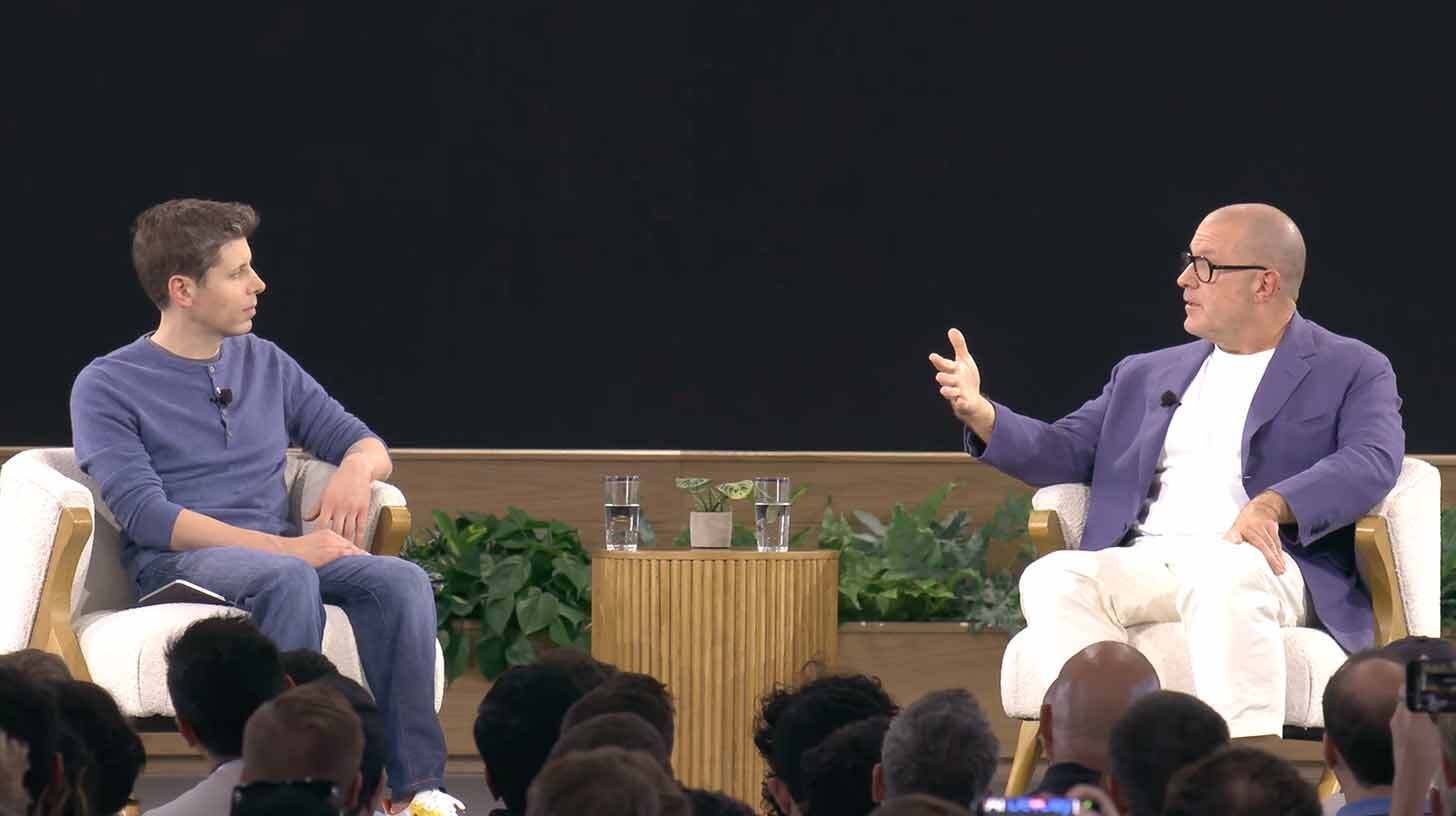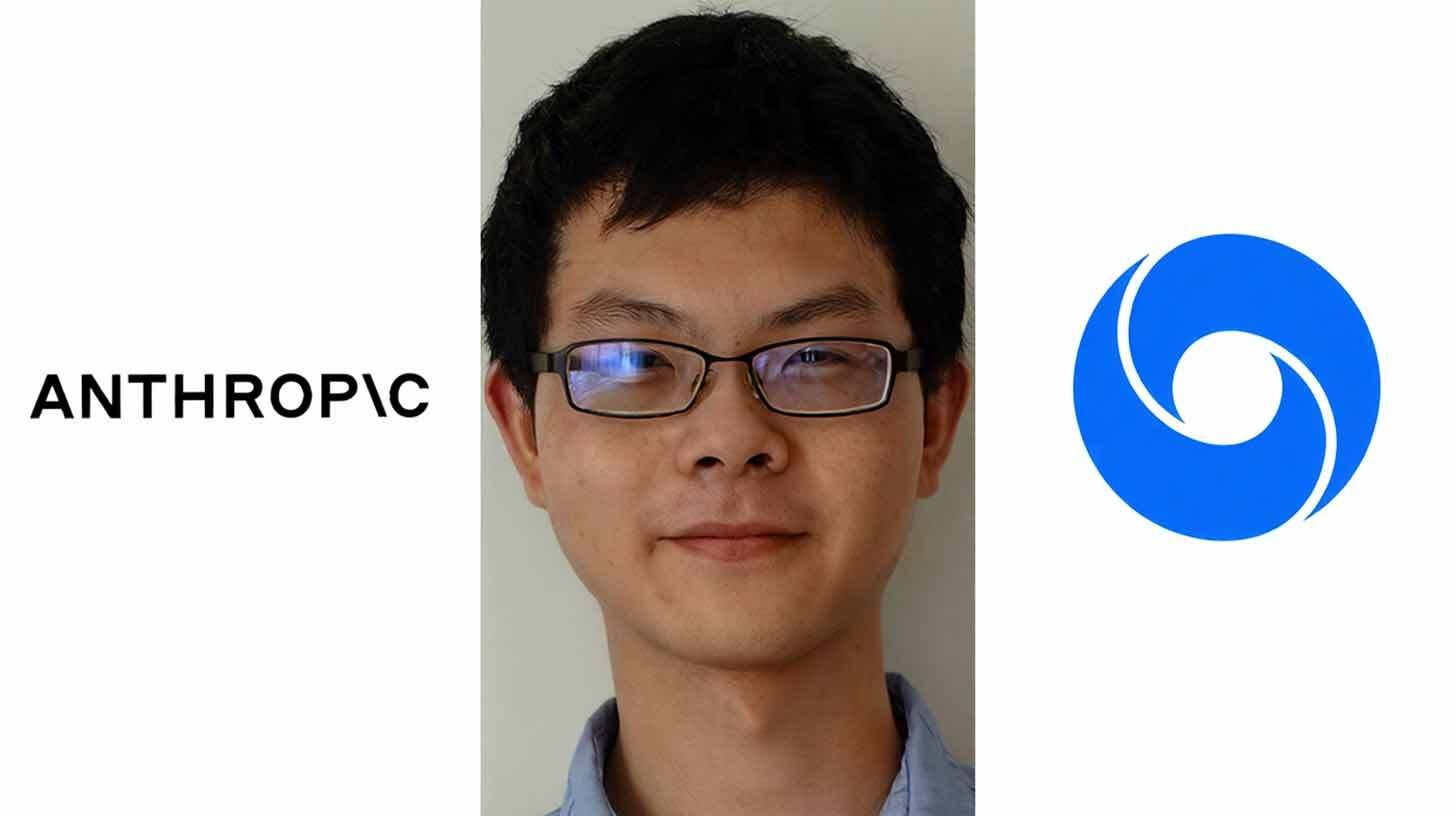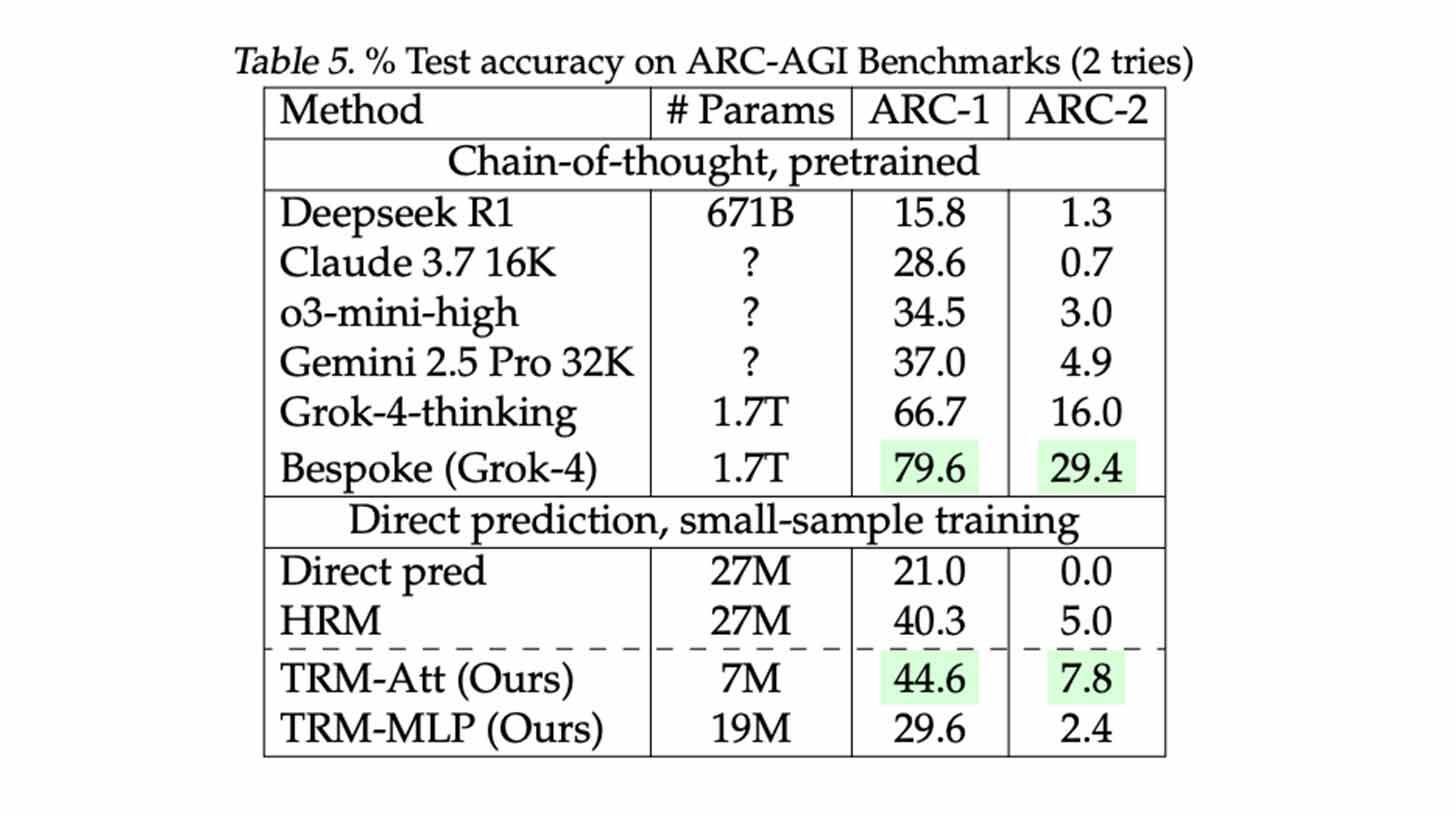- The Rundown AI
- Posts
- Jony Ive's 'peaceful' AI hardware vision
Jony Ive's 'peaceful' AI hardware vision
PLUS: Create a content brainstormer with Google's Opal
Good morning, AI enthusiasts. Jony Ive just admitted what we all know but rarely say out loud: our relationship with tech has become "uncomfortable" — and he's hoping to design the OpenAI device that changes the course.
But with 15-20 hardware concepts still in development and Altman warning that creating "a totally new way to use a computer" won't happen overnight, the potential AI-fueled tech detox might be further away than anyone hoped.
In today’s AI rundown:
Jony Ive details OpenAI’s hardware vision
AI researcher leaves Anthropic over anti-China stance
Create a content brainstormer with Google's Opal
Samsung researcher’s tiny model out-reasons giants
4 new AI tools, community workflows, and more
LATEST DEVELOPMENTS
OPENAI

Image source: OpenAI
The Rundown: Ex-Apple design chief Jony Ive provided a broader glimpse into his hardware partnership with OpenAI during an exclusive session with Sam Altman at Dev Day, outlining plans for AI devices that heal humans’ fractured relationship with tech.
The details:
Ive noted a current “uncomfortable relationship” with tech, hoping AI devices can make us “happy, fulfilled, peaceful, less anxious, and less disconnected.”
He revealed his team has created 15-20 product concepts for a "family of devices" following OpenAI's $6.5B acquisition of his startup, io, in May.
Ive said it's ‘absurd’ to think AI can be delivered via legacy products, though Altman said there must “be a really compelling reason for something new.”
Altman also said in an interview with The Rundown that OAI’s hardware efforts will “require patience” to “develop a totally new way to use a computer.”
Why it matters: While Ive and Altman are staying tight-lipped for now, the callout of current tech’s psychological impact and a focus on emotional well-being could mark a major shift from the addictive patterns of current devices. However, with Altman’s reiterated need for patience, it doesn’t sound like the launch is around the corner.
TOGETHER WITH WISPR FLOW
The Rundown: Wispr Flow is the voice-first productivity tool that turns your thoughts into action. From emails and Slack to code and AI prompts, Flow makes your words appear instantly—formatted, precise, and ready to share. Built for speed and context, it helps you write 3x faster and stay in flow.
With Wispr Flow, you can:
Dictate anywhere you type, and auto-format with smart editing
Draft emails, docs, or code hands-free
Whisper quietly in shared spaces
Supercharge prompts for ChatGPT & Claude
ANTHROPIC & GOOGLE

Image source: LinkedIn / Reve / The Rundown
The Rundown: Prominent physicist-turned-AI researcher Yao Shunyu departed Anthropic for Google after less than a year, publishing a blog that cites the startup's characterization of China as an "adversarial nation" among his reasons for leaving.
The details:
Yao contributed to Claude 3.7 Sonnet and Claude 4 during his year at Anthropic before resigning in mid-September.
The researcher attributed 40% of his decision to Anthropic's policy barring subsidiaries from “adversarial nations like China” from accessing services.
He also noted other “undisclosed internal matters,” with Yao writing that while his time at Anthropic was valuable, “it is better without you."
DeepMind recruited Yao as a senior research scientist for its Gemini team, where he will reportedly work on the company’s flagship foundation models.
Why it matters: The geopolitical tensions in AI development aren't just impacting countries and labs, but also individual researchers navigating their careers. While the AI talent wars of this year centered largely on compensation and compute, corporate stances on international cooperation may end up proving just as important.
AI TRAINING
The Rundown: In this tutorial, you will learn how to build a content brainstorming app using Google's Opal, turning blank page syndrome into instant social media post ideas with hooks, outlines, and hashtags — no coding required.
Step-by-step:
Go to Google Opal, sign in with your Google account (free during beta), and click "+ Create New" to access the visual canvas with a prompt bar
Prompt: "Create a content idea generator. Input a topic and platform (LinkedIn or Twitter). Pull recent trends, then generate 5-10 post ideas with attention-grabbing hooks, 3-bullet outlines, and relevant hashtags. Output as a formatted table with thumbnail image suggestions"
Refine your app by chatting with Opal to add features like "Add export to Google Docs for easy copying," then test with a real topic like "Give me ideas for a post on best AI tools," and select your platform
Fine-tune outputs by selecting nodes and clicking "Suggest an edit to the prompt" to refine tone or specificity, then click "Share App" in the top right and set permissions to "Anyone with the link"
Pro tip: Build different versions for different platforms: a LinkedIn thought leadership generator, a Twitter viral thread builder, or an Instagram caption writer.
PRESENTED BY NOTION
The Rundown: Notion Agent is a personalized AI teammate that's mastered every Notion building block. Tell it your goals and watch it work — creating databases, editing pages, and completing workflows in minutes that used to require days of manual effort.
Your Notion Agent can:
Complete end-to-end workflows across pages and databases
Search and analyze data from Notion, Slack, Google Drive, and the web
Learn your preferences and customize its approach to match your style
Create anything in Notion — from project plans to content calendars
AI RESEARCH

Image source: Alexia Jolicoeur-Martineau
The Rundown: Samsung’s Alexia Jolicoeur-Martineau introduced the Tiny Recursion Model, a 7M parameter AI that beats DeepSeek R1 and Gemini 2.5 Pro on complex reasoning using a self-improvement loop of drafting, rethinking, and refining solutions.
The details:
TRM scored 45% on the notoriously difficult ARC-AGI-1 and 8% on ARC-AGI-2, surpassing models thousands of times larger.
Instead of generating answers token by token, TRM drafts solutions and refines them through up to 16 cycles of internal reasoning and revision.
The model maintains a separate scratchpad where it critiques and improves its logic six times per cycle before updating its answer draft.
The results were promising for the very specific types of puzzle questions present in ARC, but don’t necessarily translate across all reasoning areas.
Why it matters: With the race for billions of dollars of compute and massive scale in AI models, research like TRM (and Sapient’s HRM) shows that smart architectural tweaks can level the field for small, efficient models. While the focus here is on puzzles, the principle could change how labs with limited resources approach AI development.
QUICK HITS
⚡ CData Connect AI – Connect any of your data sources to AI for real-time enterprise data connectivity with MCP to make AI work for you*
💻 Gemini 2.5 Computer Use - Google’s AI for agents that can interact with UI
🎥 Grok Imagine v.0.9 - xAI’s updated image and video generation platform
💎 Google Opal - Build, edit, and share AI mini-apps with natural language
*Sponsored Listing
Analytics firm Appfigures estimates that Sora was downloaded 627,000 times during its first week in the App Store, surpassing ChatGPT’s first week of downloads.
Anthropic announced a new office in India slated to open in 2026, marking its second Asia-Pacific location — with Claude usage ranking second globally in the country.
Google expanded its AI-powered try-on feature to additional countries, while also adding a new footwear feature to display how shoes would look on individual users.
Customer support software firm Zendesk unveiled new AI agents that it claims can resolve 80% of support tickets, alongside additional co-pilot and voice agents.
MIT, IBM, and University of Washington researchers released TOUCAN, the largest open dataset for training agents, with 1.5M tool interactions across 495 MCP servers.
COMMUNITY
Every newsletter, we showcase how a reader is using AI to work smarter, save time, or make life easier.
Today’s workflow comes from reader Raj S. in Toronto, CA:
"I’m working with North American manufacturers in plastic molding, injection molding, and powder metallurgy — industries where a single mistake in a Bill of Materials or CAD Blueprints can delay production for weeks. We’re building an AI-powered BOM system and Blueprint Classifier to automate these tasks. Early tests show we can cut blueprint review time by 60% and reduce BOM preparation effort by 50%. For manufacturers, that means lower costs, faster production cycles, and fewer errors."
How do you use AI? Tell us here.
Read our last AI newsletter: An exclusive Interview with Sam Altman
Read our last Tech newsletter: Musk’s Memphis AI empire
Read our last Robotics newsletter: Optimus now does kung fu
Today’s AI tool guide: Create a content brainstormer app with Opal
RSVP to our next workshop @ 4PM EST Friday: Agent Builder first look
That's it for today!Before you go we’d love to know what you thought of today's newsletter to help us improve The Rundown experience for you. |
See you soon,
Rowan, Joey, Zach, Shubham, and Jennifer — the humans behind The Rundown





Reply